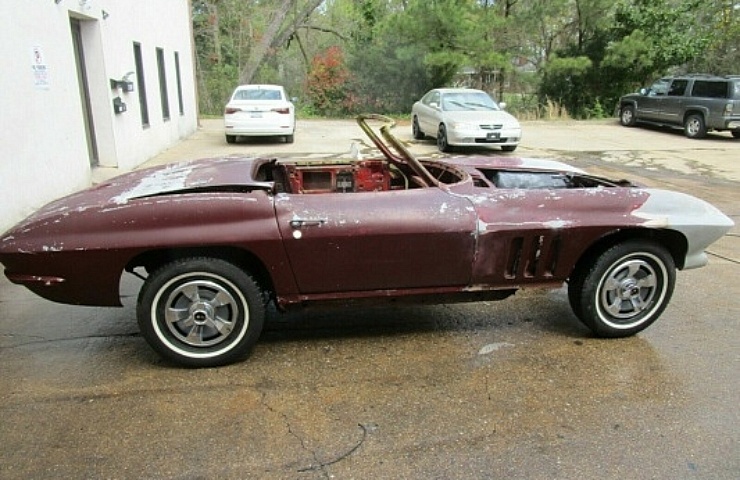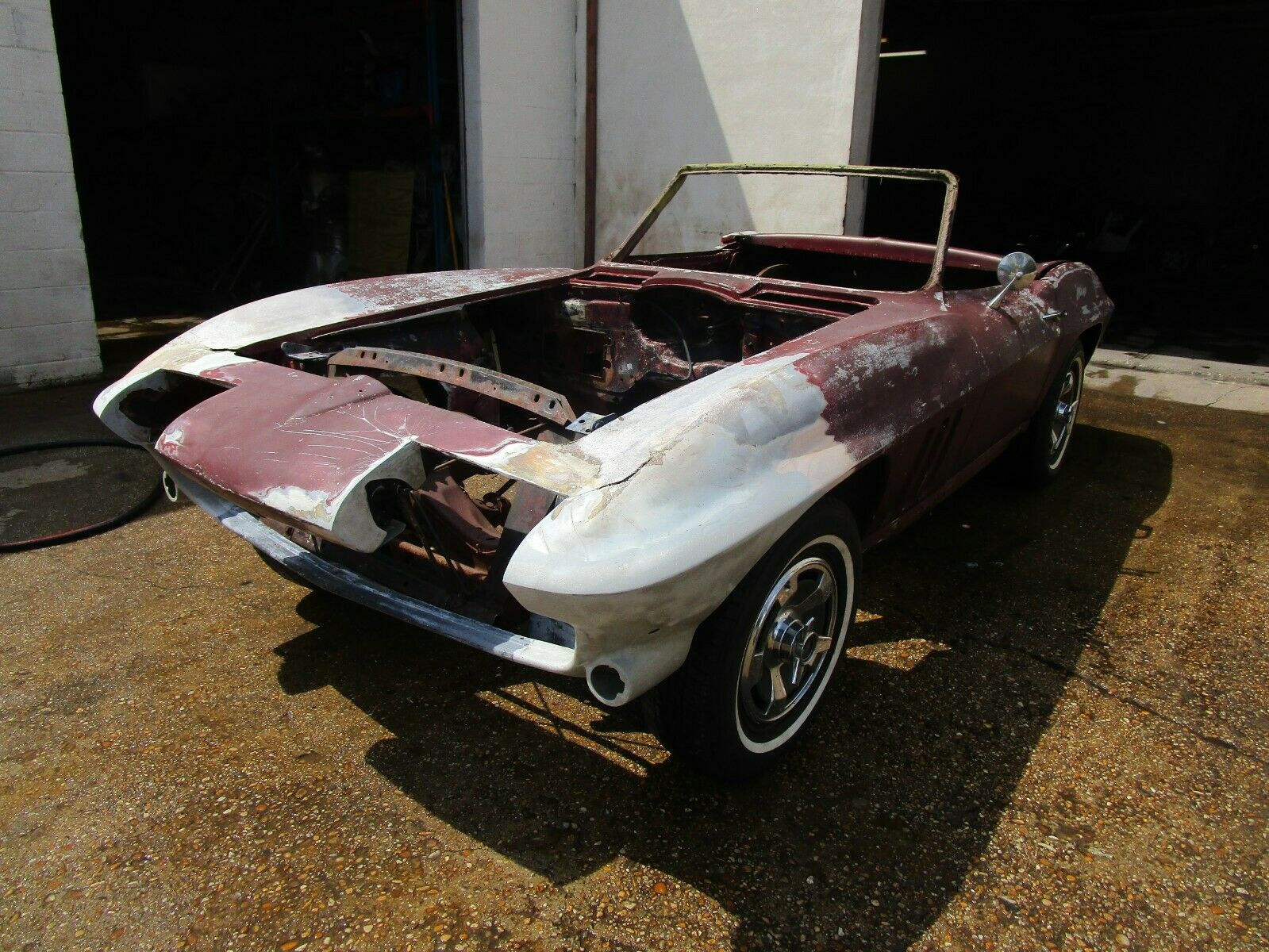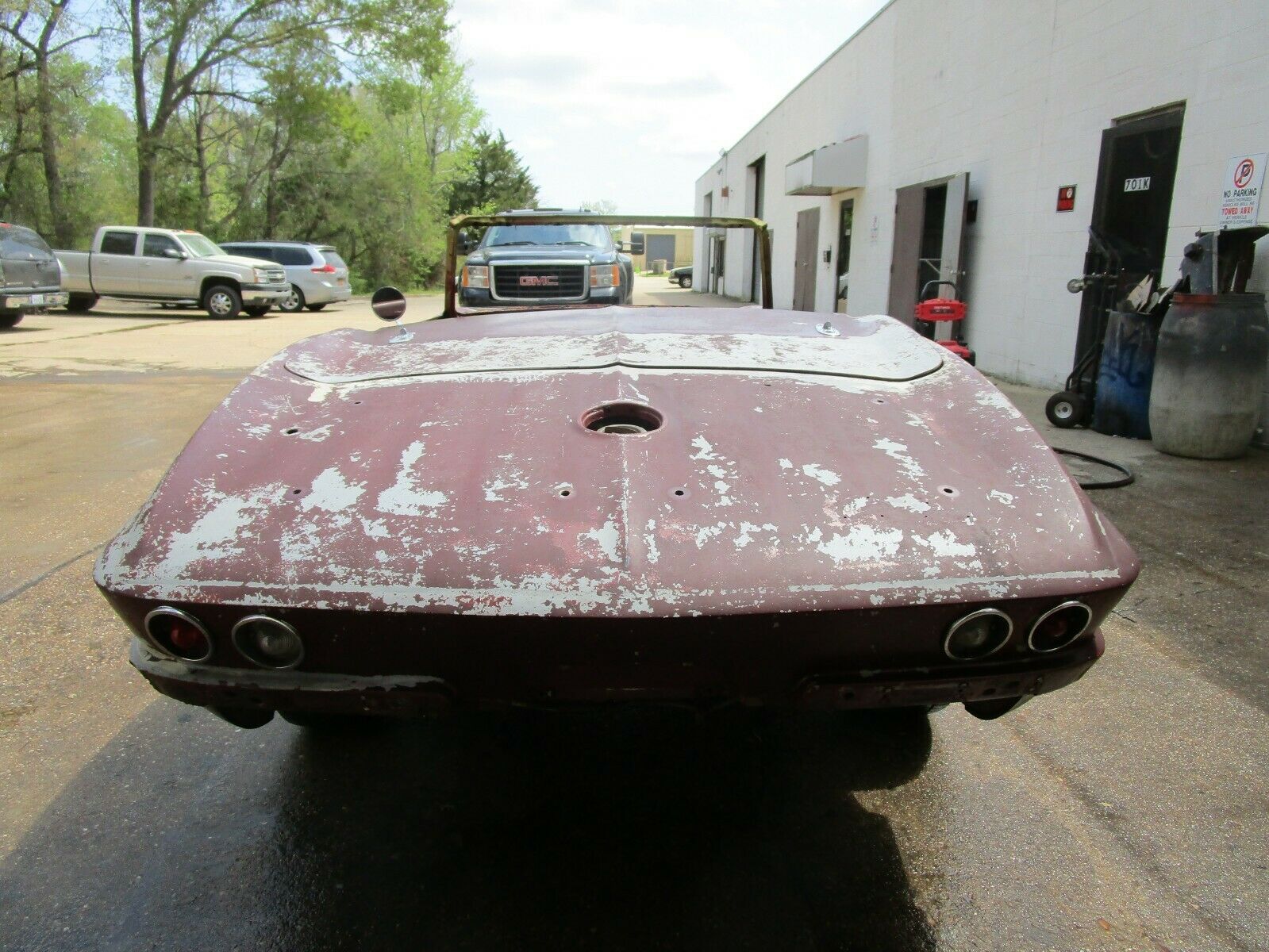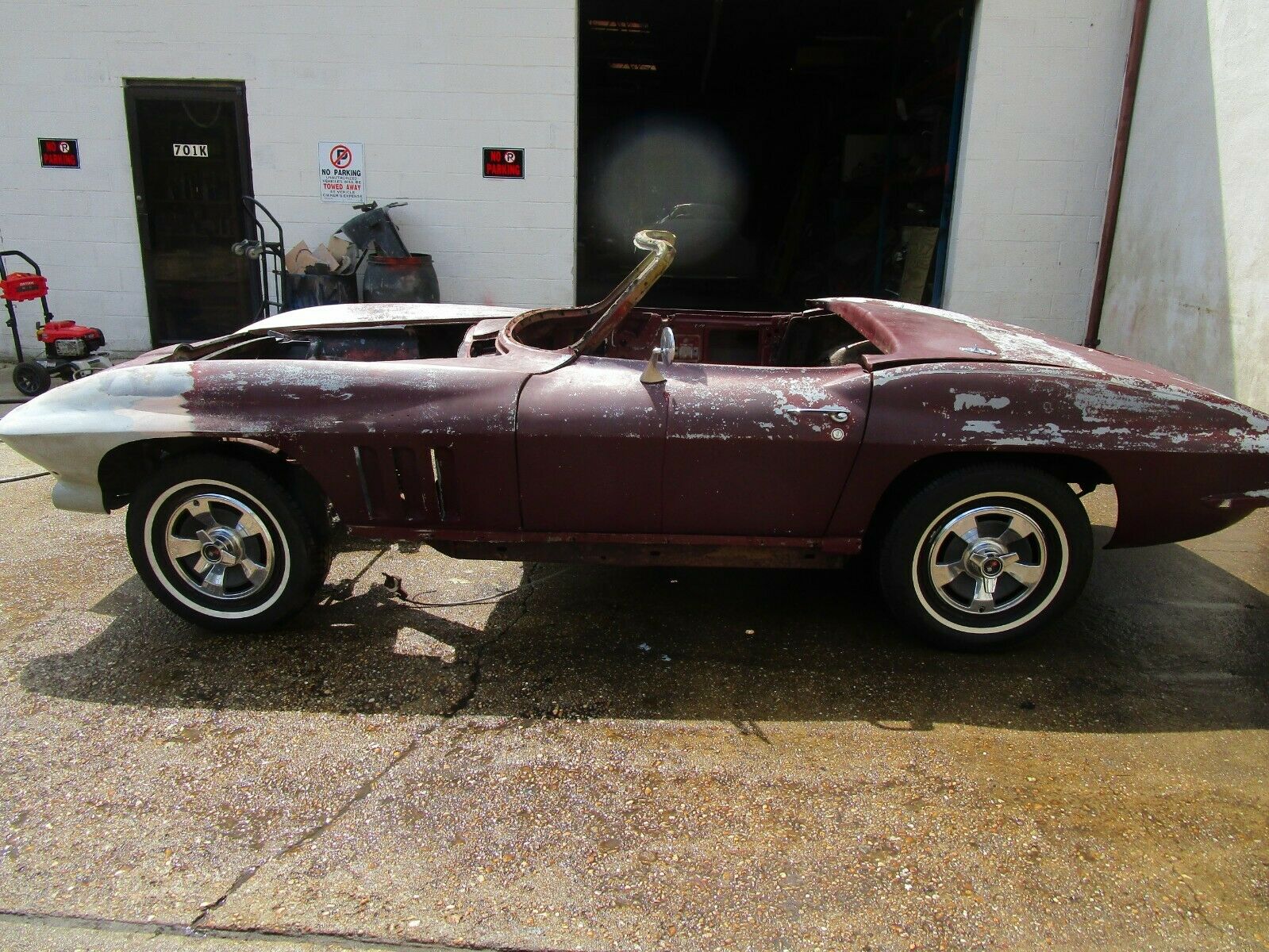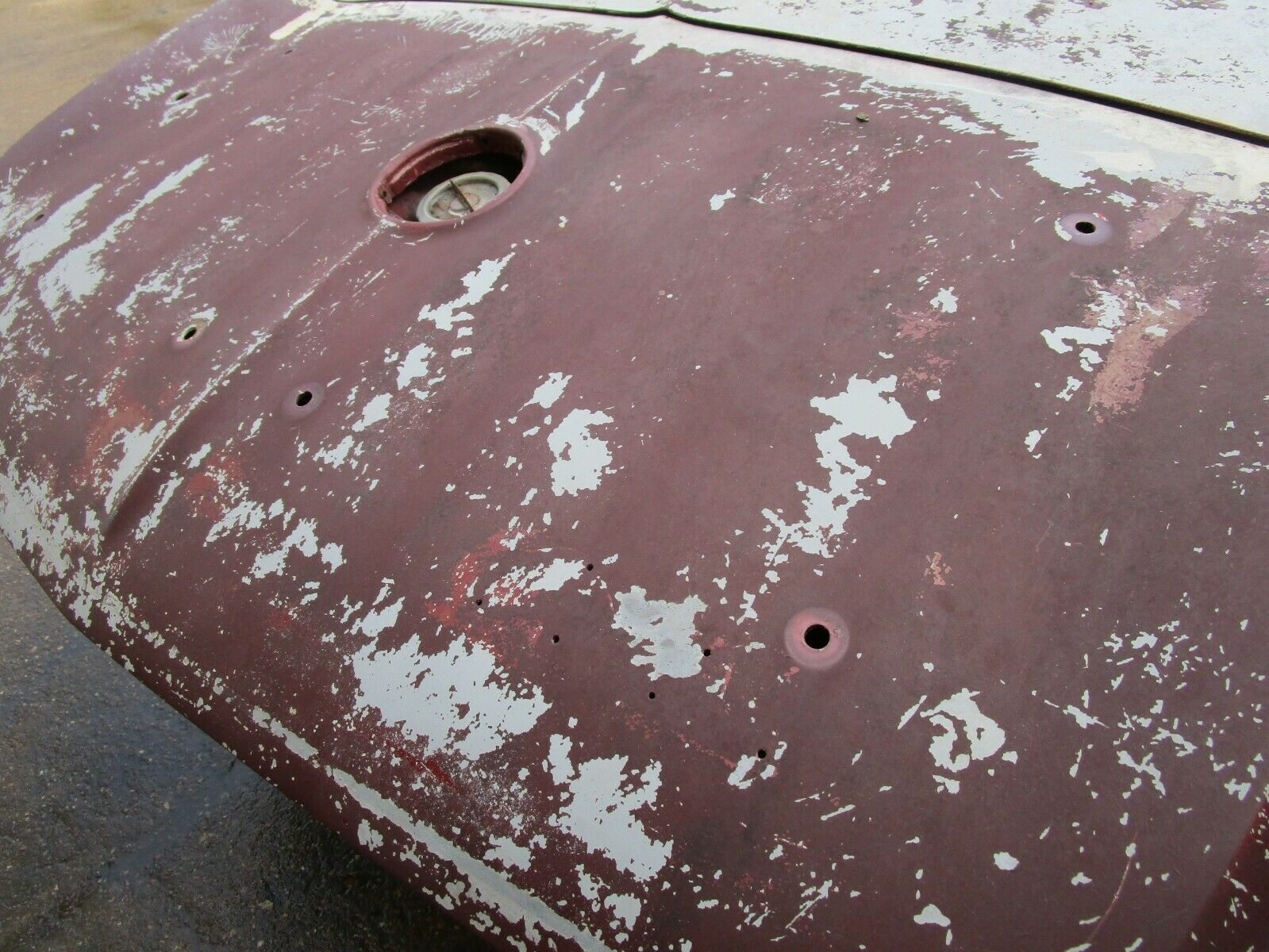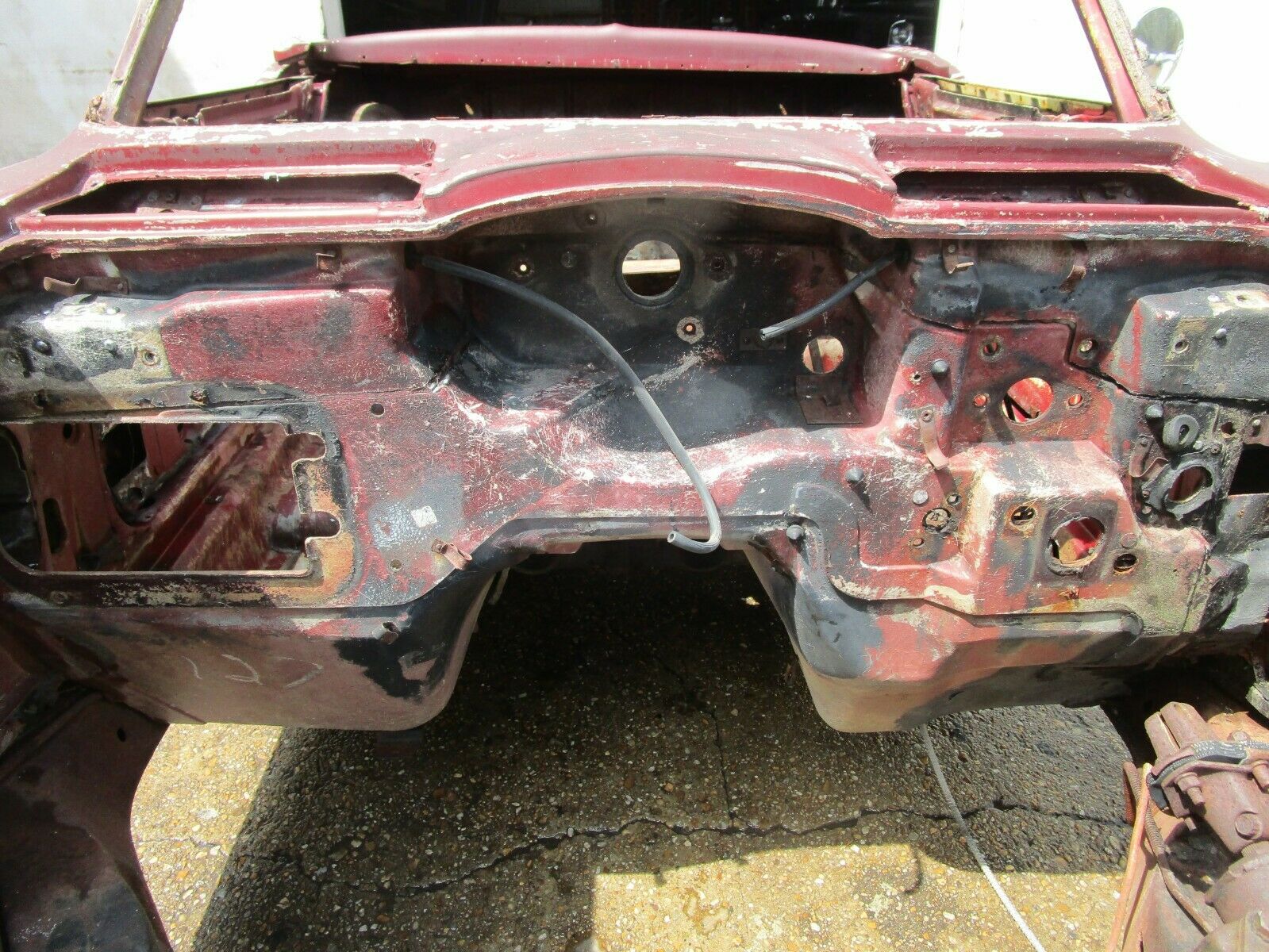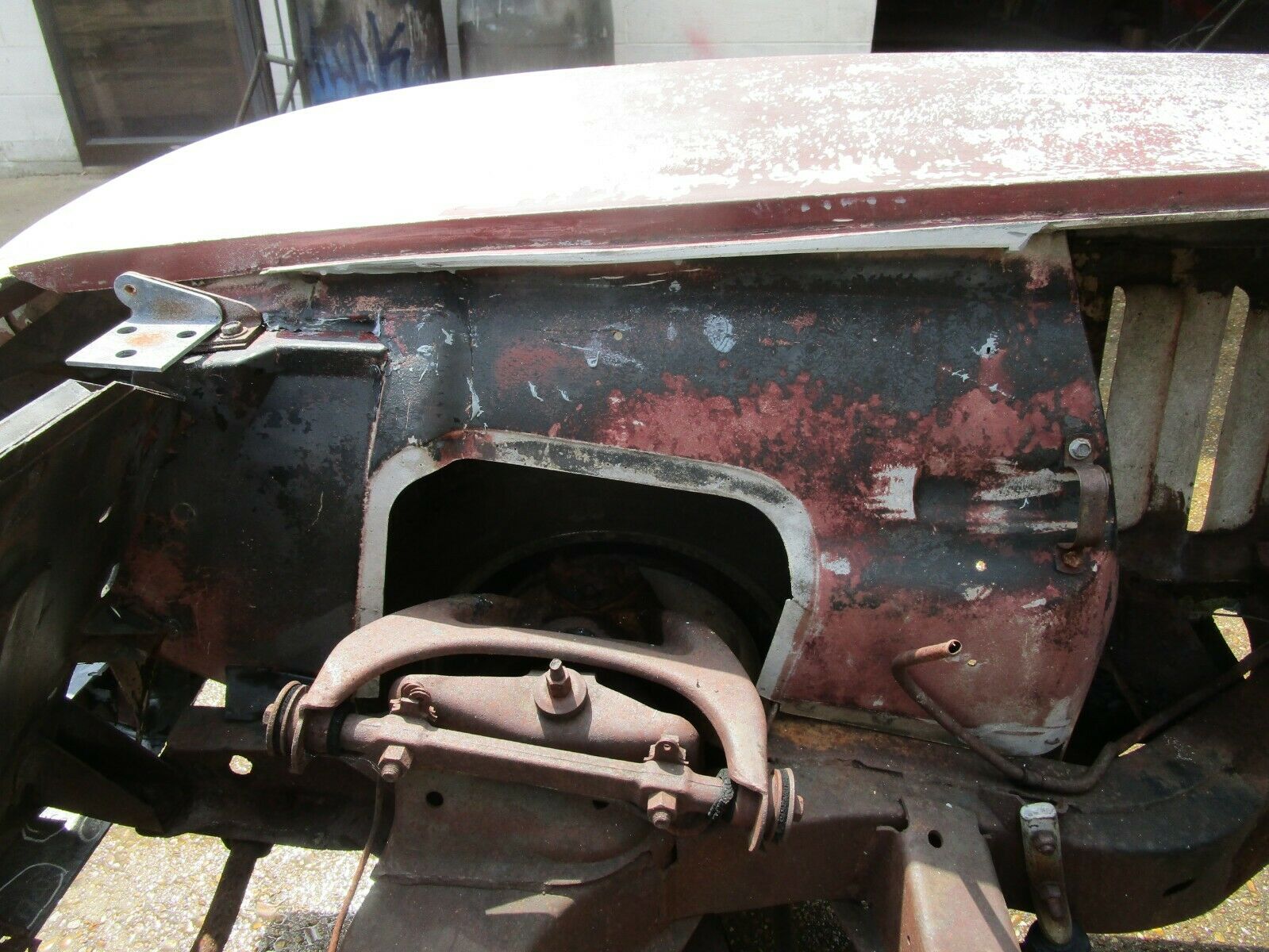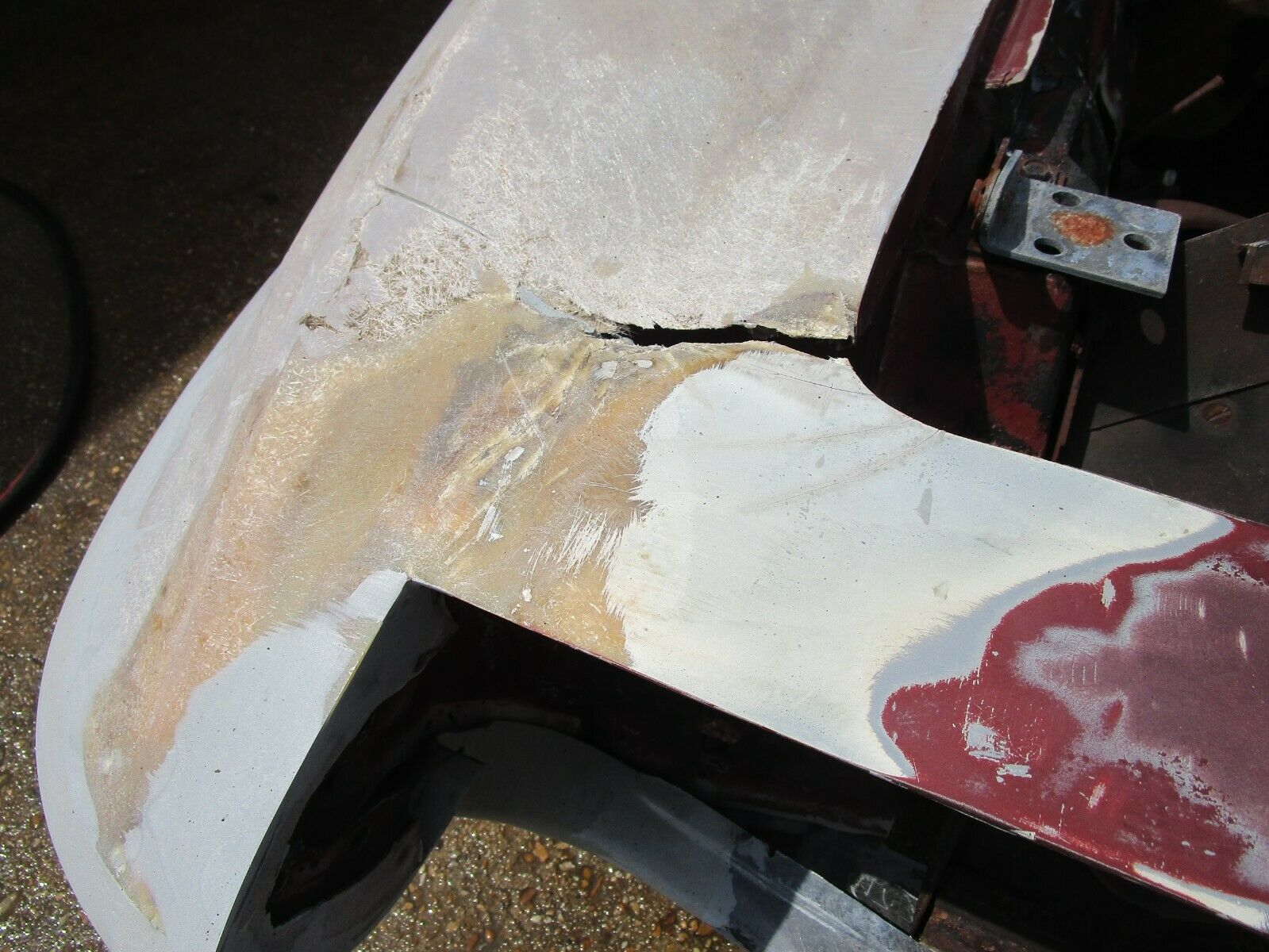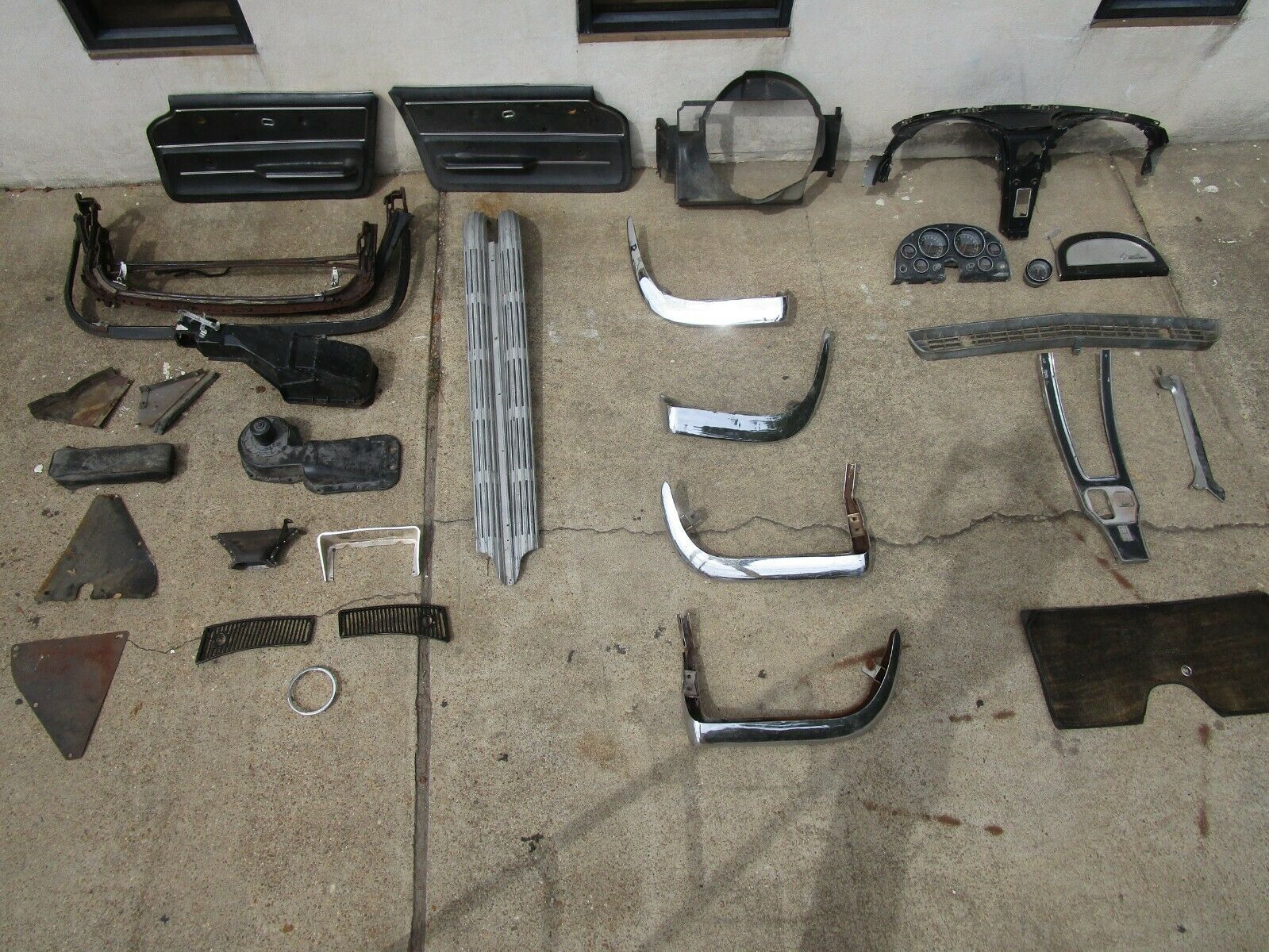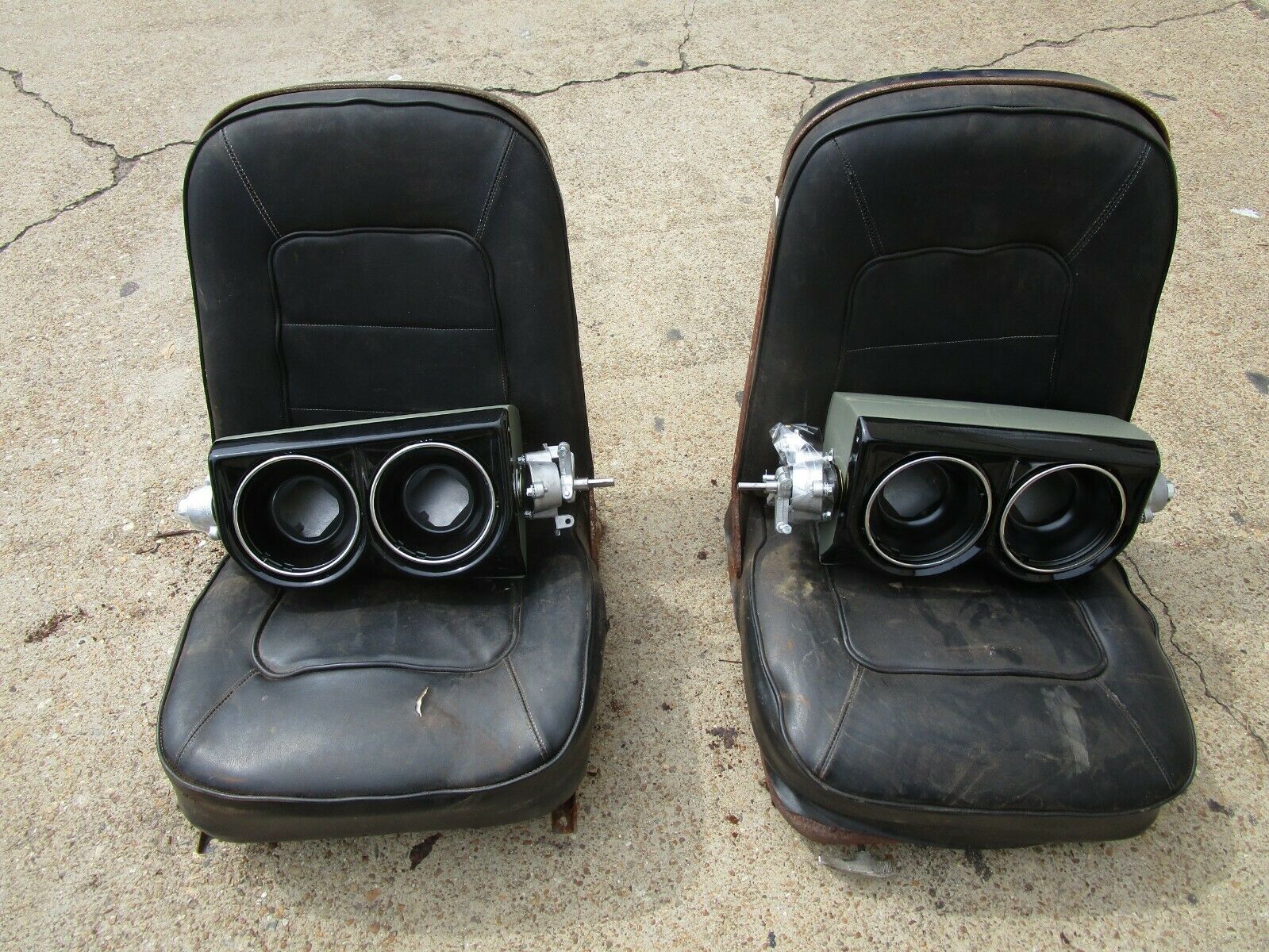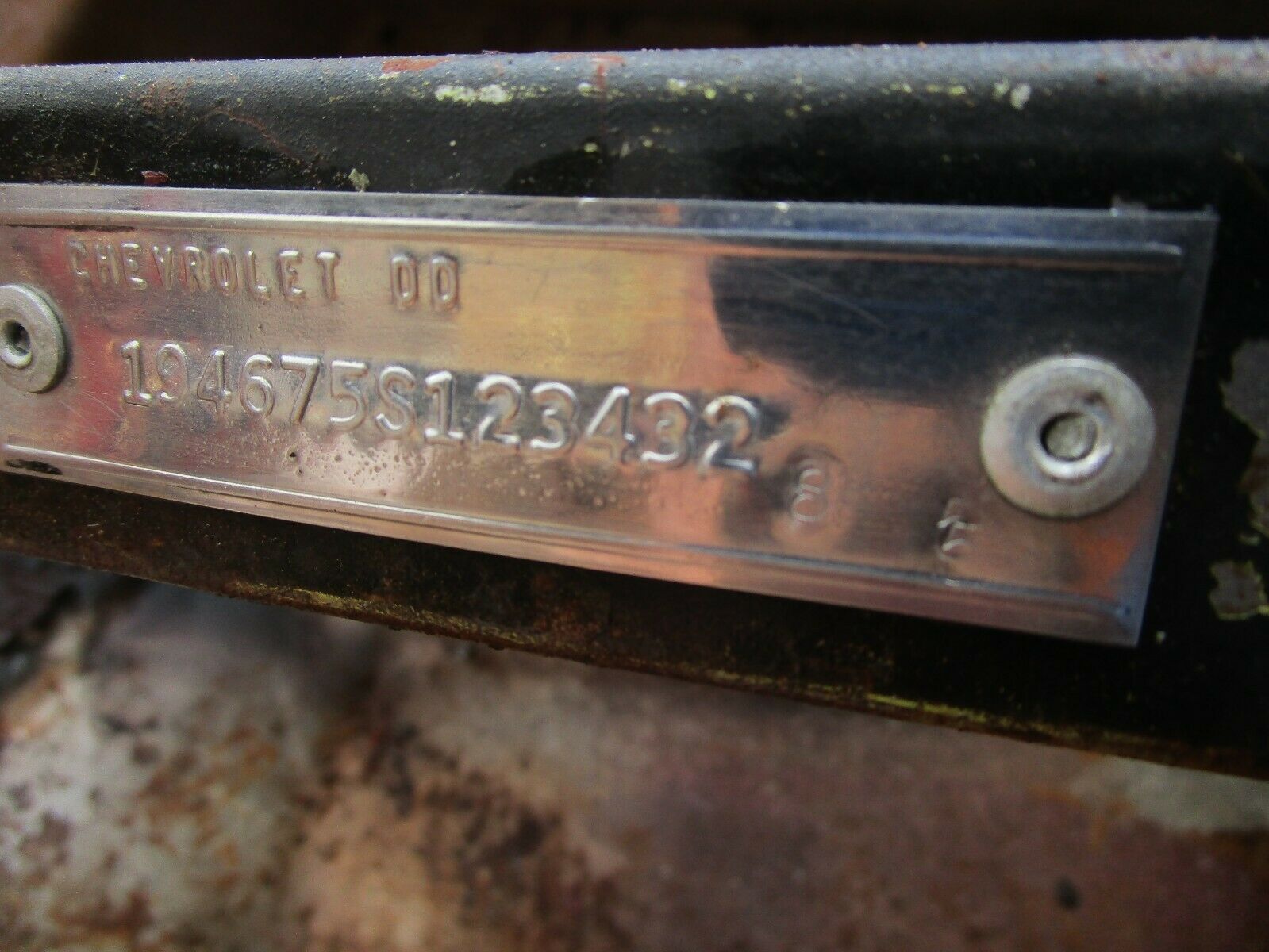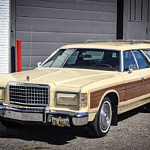Contents
The price of a mint condition 1965 Chevy Corvette can quickly climb from about $40,000 to more than six figures. Then again, the body of this ’65 Vette sold eBay a few weeks ago for only $17k.
It’s tempting to consider similar options, but you’ll need to enter the world of the “rolling chassis”—a term describing a vehicle with no engine, transmission, and possibly no differential gears. So what challenges does that present a hands-on enthusiast?
A rolling chassis has tires and wheels and usually can be rolled and trailered with no difficulties. But that’s usually as far as they go. These vehicles might include a body and interior, but even that’s not guaranteed.
Let’s examine the four key questions to consider when buying a roller.
Does It Have a Title?
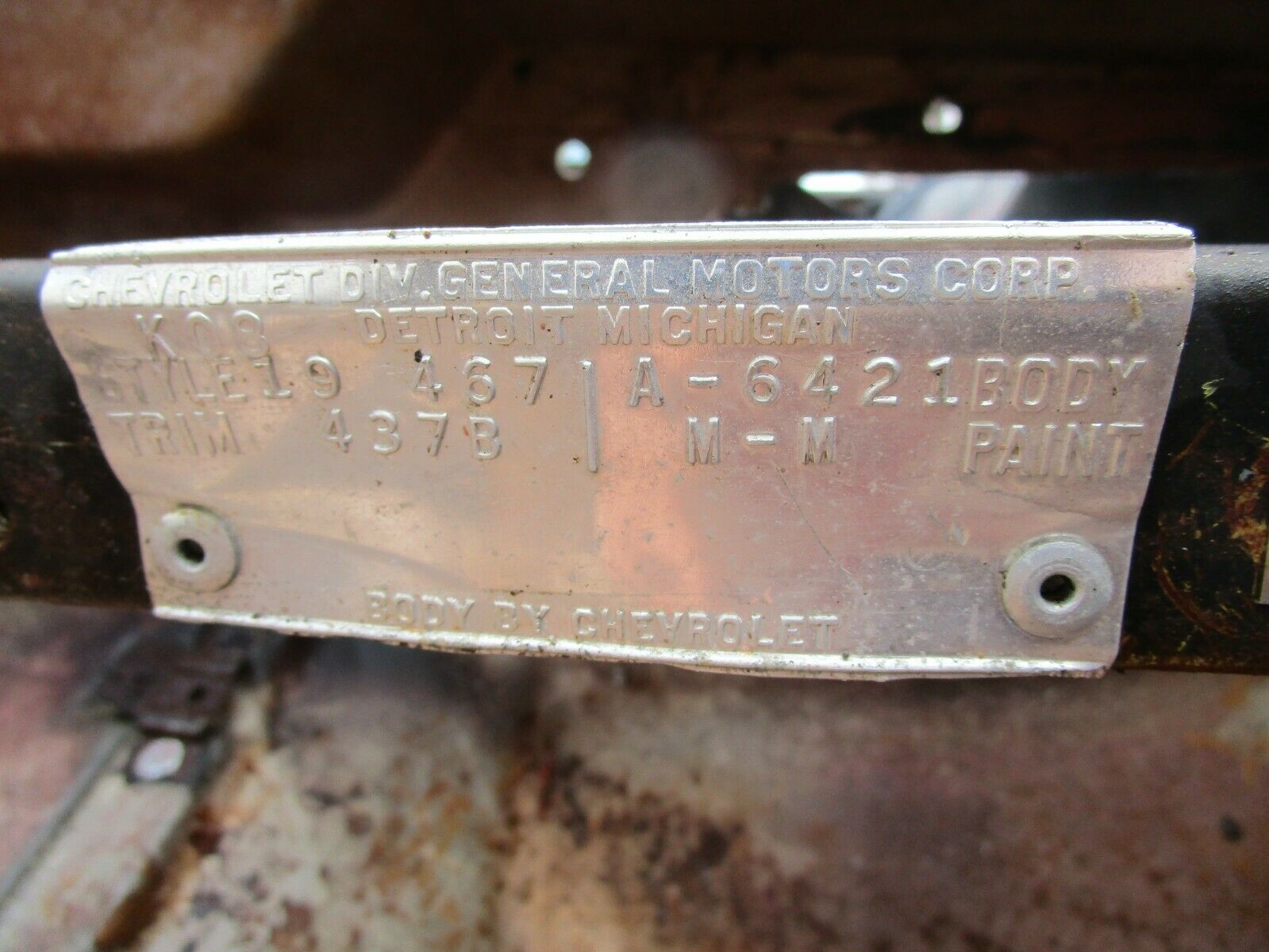
The trim tag is present, but make certain a title is also available.
The 1965 Corvette rolling body sold on eBay has a clear Virginia title. That was a huge plus for this listing and any other rolling chassis. The seller said the car has both the vehicle identification number (VIN) and trim tags. Those are important items if you hope to fully restore this Corvette to how it left the factory.
But suppose a rolling chassis is offered without a title? In most states, you can purchase a title with just a bill of sale. But don’t close the deal until you make sure what state authorities need to get a new title. Some states require a rigorous inspection to determine the condition of the car once it is completed. Others want a verifiable serial number.
Not having the title can cause problems down the road. For example, it could make it much more challenging to sell the car outside your state.
If the car has an identifiable VIN, search to ensure there’s no history of theft, flood, or other serious problems. A full rundown on a car’s history via AutoCheck is one click away on the “Vehicle History Report” tab of many listings on eBay. But a VIN is less likely to be listed with a roller—so you’ll need to get your hands on the VIN to learn about the chassis’s history.
How Complete Is the Chassis?
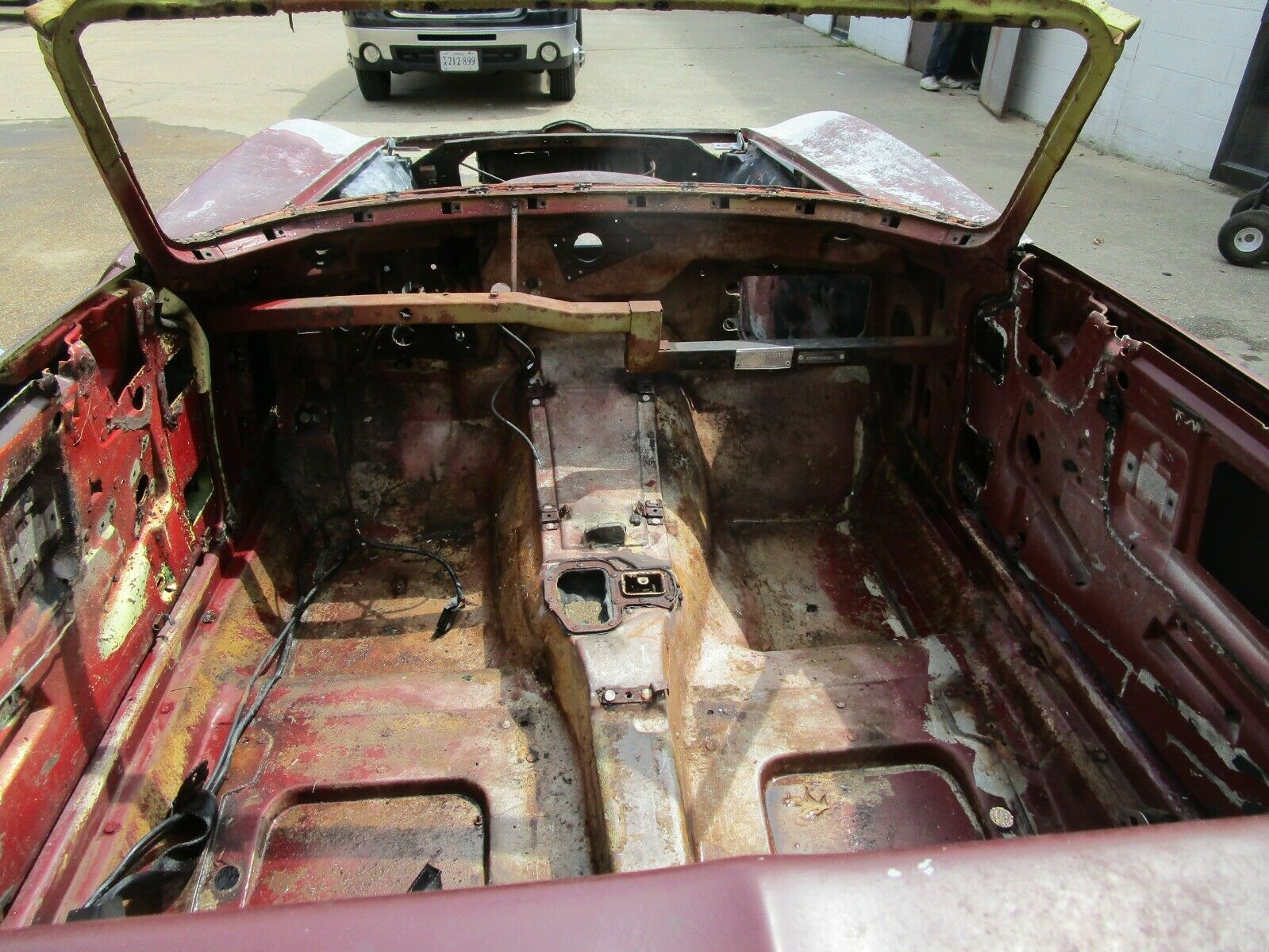
This roller doesn’t look too bad from a distance. Or is it?
The seller of this ’65 Corvette gave detailed descriptions of the chassis and all of its steering and suspension components. He also described the body shell, noting several areas where there are major flaws.
Depending on your intended use, some of these issues might not be problems at all. The suspension and steering could eventually be replaced by contemporary steering and suspension parts.
The 1965 Corvette also came with “lots of parts,” according to the seller. A couple of the most valuable pieces in this sale include the “nice original fiberglass dash frame,” a bit that can cost upwards of $2,500. And the original convertible top frame assembly can easily run $1,000 or more.
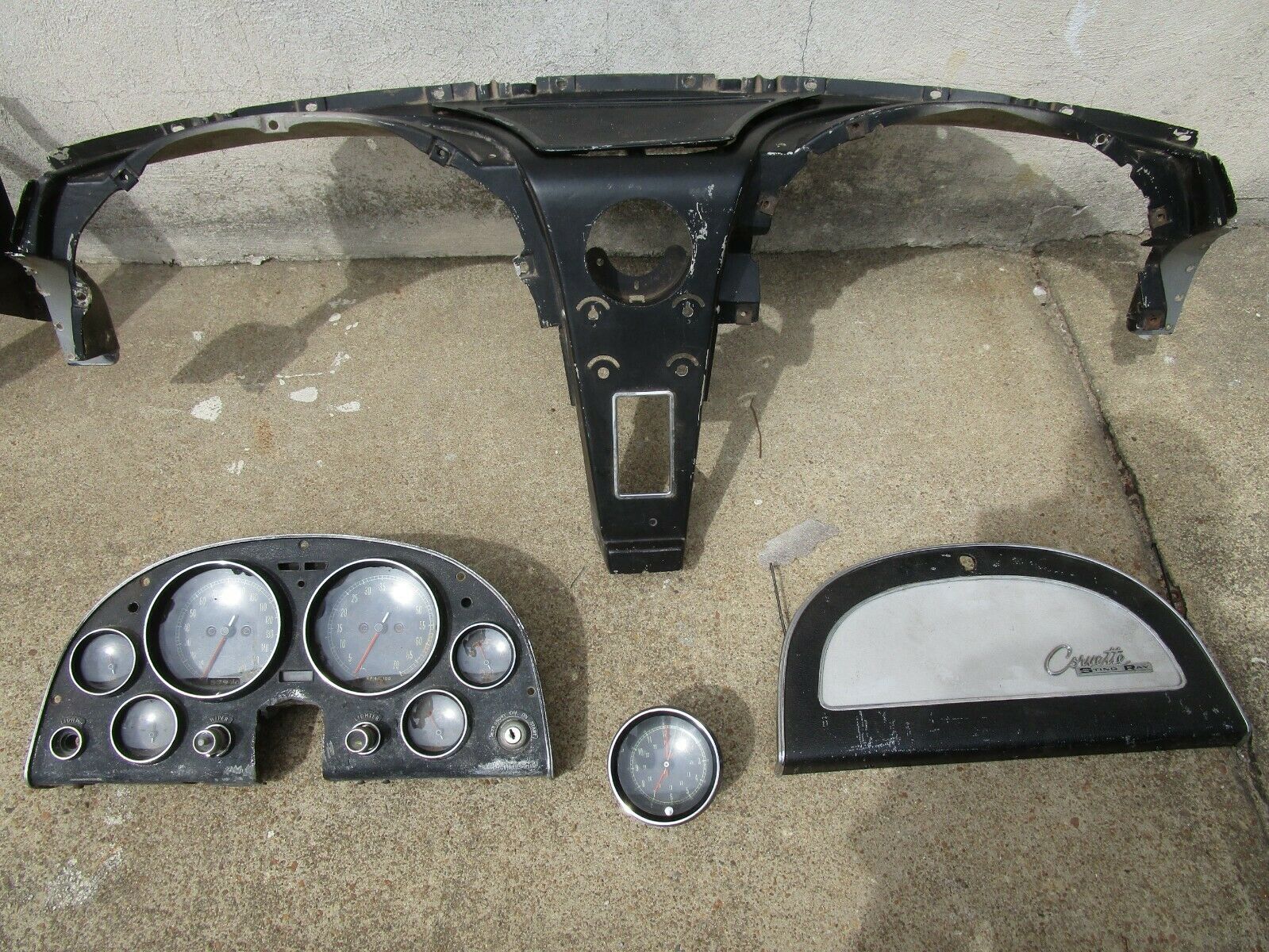
Dashboard pieces can get very expensive if not included. These were part of the listing.
Spare parts that come with a sale—or those that you can find on eBay—are usually very helpful in a restoration project. They could make a significant contribution to the overall value of the listing. And parts that you don’t plan to use can be sold, providing revenue to help purchase parts you need.
Do You Have the Skills and Space?
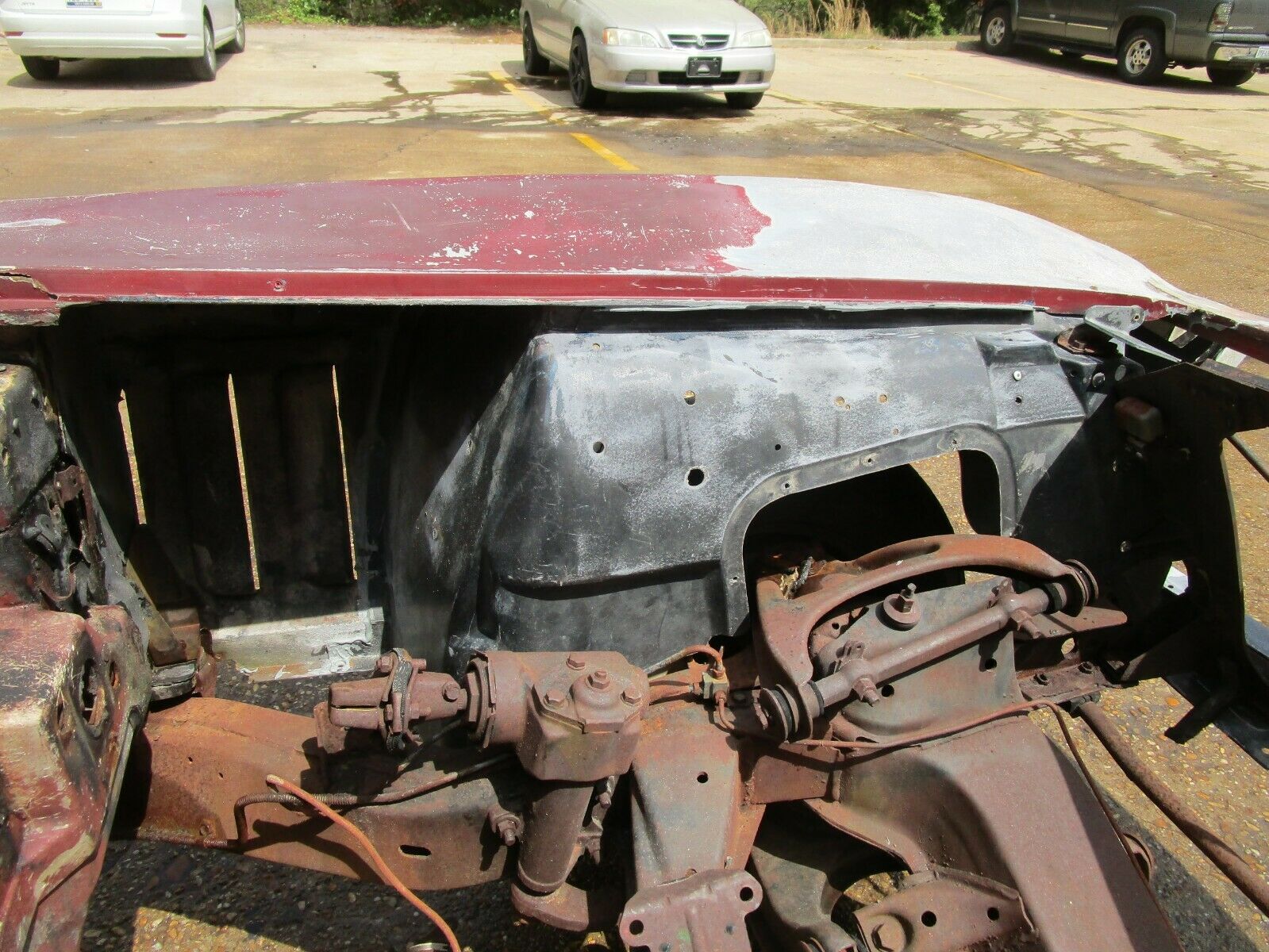
Close inspection of the chassis is needed. So is introspection.
The next question requires some self-reflection. Transforming a rolling chassis into a finished vehicle requires knowledge, skill, and space. The scale of a project can quickly expand after you begin the disassembly of the chassis.
- Can you use basic hand tools?
- Are you very organized?
- Are you comfortable taking on tasks like wiring, installing fuel and brake lines, and basic trim cleaning and polishing?
If the answer is yes to all these questions, then proceed. If not, maybe give the project some more thought.
Space and equipment are also an issue. Working on a body often requires mounting the shell on something sturdy—or the use of a moveable rotisserie stand. In addition, you’ll want to shift the body around your shop area as you move from chassis to body and back again, making the best use of your floor space.
Working on the body typically kicks up a cloud of filler and fiberglass residue. This bodywork should be separated from necessary tasks on the chassis. In many cases, it’s wise to outsource the initial bodywork so you can focus on the chassis and other manageable enhancements. Of course, hiring a body shop or other technicians will add cost.
A Hard Look at the Budget
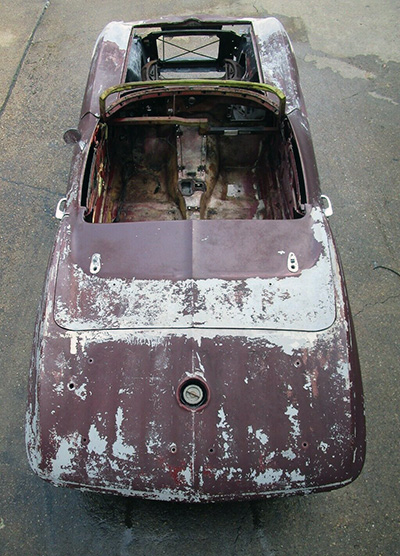
Think about the potential of this 1965 ‘Vette.
Car enthusiasts have a bad habit of underestimating what a car project takes. Consider this rule of thumb: Estimate expected expenses on a sheet of paper or spreadsheet—and then double the bottom-line number.
The 1965 Corvette rolling chassis will need replacement parts. Did you also consider that a cleaned suspension and frame will need powder-coating? The body will also need to be painted. And don’t underestimate the prep time required before any spray finish is applied.
Let’s not forget the interior. This Corvette has seats, but the tracks are rusty. The entire dash needs replacing. The convertible top mechanism is present, but it needs attention.
On the other hand, the advantage of purchasing a rolling chassis is the freedom to install a powerful drivetrain. A fully assembled crate engine starts around $2,000 for a fully machined and prepped short-block with crank, rods, and pistons in place. But a long block with heads and valve train could set you back $8,000 or more, depending on many factors.
What Are You Waiting For?
That’s a long list of concerns and caveats. But if you locate a rolling chassis in reasonably complete condition with a title—and you have the skills and budget— there’s no time like the present to fulfill your automotive dreams.
And once completed. you can proudly display a decal or t-shirt that declares “Built Not Bought.” You can’t put a price on that.

